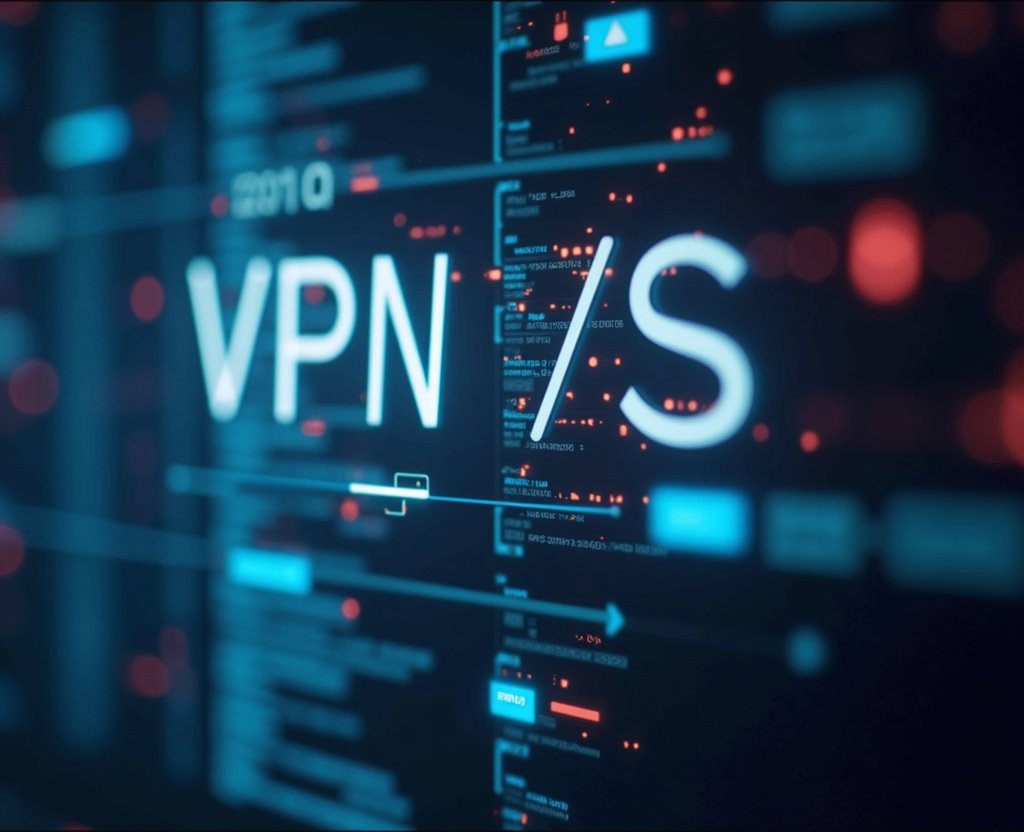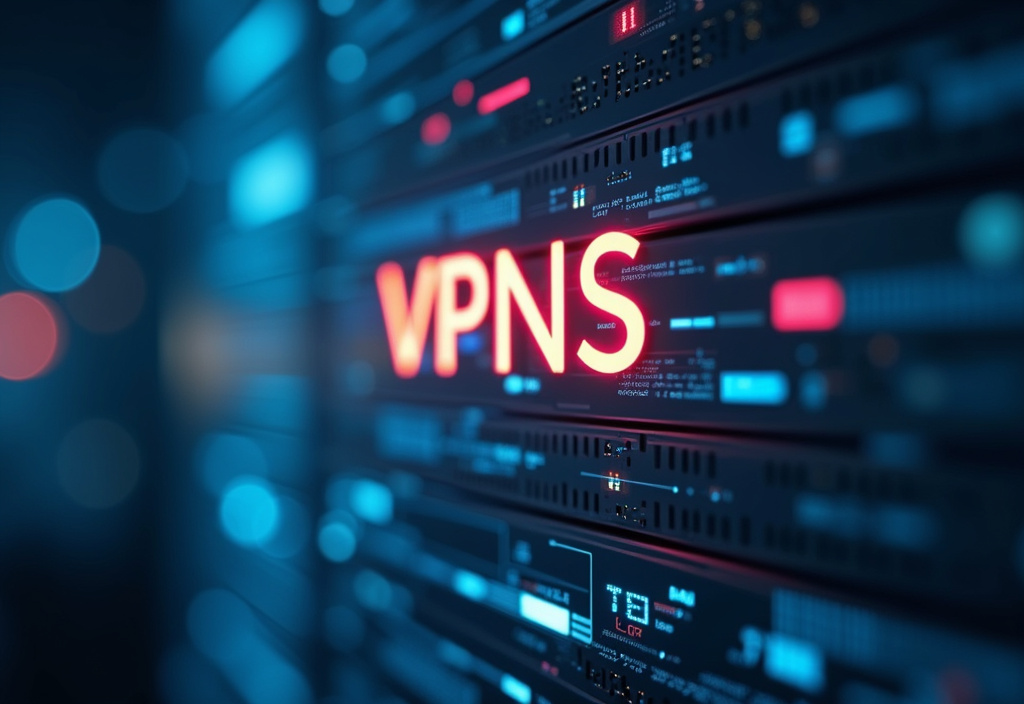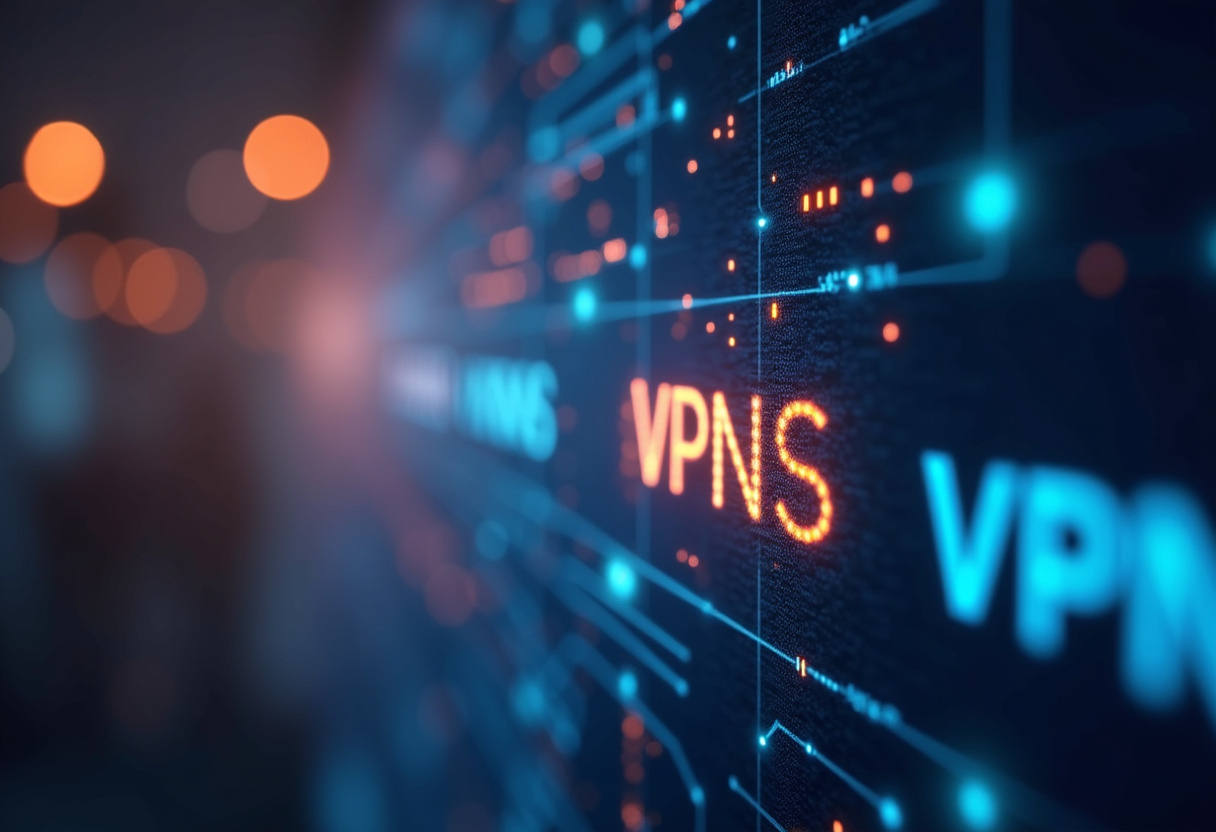VPNs for Telecom Services: Ensuring Network Security

Table of Contents
In the high-stakes arena of modern telecommunications, where digital pathways carry immense volumes of sensitive data, network security isn't merely a consideration; it's the bedrock upon which trust and reliability are built. Telecom companies are increasingly targeted by sophisticated cyberattacks, posing a significant threat to customer data, operational integrity, and ultimately, the very survival of the business. These threats range from large-scale Distributed Denial of Service (DDoS) attacks designed to cripple services to stealthy data breaches meticulously crafted to steal valuable customer information.
Protecting voice and data security, ensuring seamless customer communication protection, and maintaining the availability of critical telecom services are paramount imperatives in this challenging landscape. Virtual Private Networks (VPNs) have emerged as a crucial and multifaceted solution for telecom companies seeking to fortify their defenses and mitigate these ever-present risks. A telecom VPN, designed with the specific needs and challenges of the telecommunications industry in mind, goes beyond the typical consumer-grade VPN, offering a robust suite of security features, granular control, and the scalability necessary to protect complex network infrastructures.
A VPN for telecom provides a secure, encrypted tunnel for data transmission across public networks, effectively shielding sensitive information from prying eyes. This is particularly crucial for protecting customer communications, ensuring that conversations, data transfers, and other interactions remain confidential and secure. The fundamental principle behind a VPN is encryption, where data is scrambled into an unreadable format before transmission, making it virtually impossible for unauthorized individuals to intercept and decipher the information.
This encryption extends to all traffic passing through the VPN, safeguarding both internal communications and external interactions with customers and partners. Imagine customer service representatives handling sensitive account information; a VPN ensures that this information remains secure as it travels across the network. Beyond encryption, a telecom VPN offers strong authentication mechanisms, ensuring that only authorized users and devices can access the network.
This includes multi-factor authentication (MFA), which requires users to provide multiple forms of identification, such as a password and a one-time code sent to their mobile device. MFA adds an extra layer of security, making it significantly more difficult for hackers to gain unauthorized access, even if they manage to obtain a user's password. A robust VPN solution also incorporates access control policies, allowing administrators to define granular access levels based on roles, responsibilities, and other criteria.
This ensures that employees only have access to the resources they need to perform their jobs, minimizing the risk of insider threats and accidental data leaks. The implementation of a VPN for telecom offers a multitude of benefits beyond enhanced security. A well-configured VPN can improve network performance by optimizing traffic routing and reducing latency.
By intelligently routing traffic through less congested pathways, a VPN can minimize delays and ensure faster and more reliable data transmission, enhancing the overall customer experience and improving the efficiency of internal operations. Furthermore, a telecom VPN facilitates secure remote access for employees, enabling them to connect to the corporate network from anywhere in the world without compromising security. This is especially valuable for telecom companies with geographically dispersed operations, allowing employees to collaborate seamlessly and securely, whether they are working from home, traveling on business, or located in remote offices.
This allows for workforce flexibility and increased productivity without sacrificing security, a critical advantage in today's dynamic business environment. In conclusion, the implementation of a comprehensive VPN solution is not just a best practice, but an absolute necessity for telecom companies in the current threat landscape. It safeguards sensitive data, maintains customer communication protection, strengthens voice and data security, improves network performance, and enables secure remote access, all contributing to a more resilient, secure, and trustworthy telecom infrastructure.
The architectural framework of a telecom VPN holds significant sway over its capacity to fortify network security effectively. In the past, VPNs primarily relied on hardware-based approaches, necessitating specialized appliances at each entry point. While this setup provided robust performance, it often came with high costs and complex management, particularly for extensive telecom networks.
However, contemporary VPN solutions are increasingly leveraging software-defined networking (SDN) and network functions virtualization (NFV) to offer enhanced flexibility, scalability, and cost-effectiveness. SDN enables centralized control and streamline VPN management, allowing administrators to dynamically adjust network configurations and policies based on evolving requirements and real-time traffic conditions. NFV, on the other hand, virtualizes network functions, such as firewalls and intrusion detection systems, enabling them to be deployed on commodity hardware.
This reduces the reliance on specialized appliances, lowering capital expenditure and simplifying maintenance procedures. This agility is essential in the rapidly changing telecom environment, where networks must adapt quickly to new threats and traffic patterns. The decision between site-to-site VPNs and remote access VPNs is also a critical architectural consideration.
Site-to-site VPNs create secure and persistent connections between entire networks, establishing a protected bridge between geographically separated locations. This is particularly valuable for telecom companies with multiple offices, data centers, or branch locations, ensuring the confidentiality and integrity of communication across the entire organization. All traffic transmitted between these locations is encrypted and protected, safeguarding sensitive business data and customer information.
Remote access VPNs, conversely, grant individual users secure connections to the corporate network from remote locations. This functionality is indispensable for supporting remote employees, mobile workers, and individuals who need secure access to internal resources while working outside the traditional office environment. Remote access VPNs ensure that these connections are encrypted and authenticated, preventing unauthorized access to the network and protecting sensitive data from interception.
The selection of appropriate encryption protocols also plays a pivotal role in the VPN's architectural design. Modern VPN solutions should support a range of robust encryption algorithms, such as Advanced Encryption Standard (AES) with key lengths of 256 bits or higher. AES is a widely recognized and highly secure encryption standard that provides strong protection against eavesdropping and data breaches.
The VPN should also support secure key exchange protocols to ensure the confidentiality and integrity of the encryption keys used to protect the data. Furthermore, a well-designed telecom VPN should incorporate comprehensive logging and auditing capabilities. These features allow administrators to monitor network activity, track user access, and identify potential security incidents.
Logs should be securely stored and regularly reviewed to identify anomalies and patterns that could indicate malicious activity. The VPN architecture should also support integration with other security systems, such as security information and event management (SIEM) platforms, enabling centralized monitoring and analysis of security events. Proper architectural design is therefore vital.
By carefully considering the specific needs of the telecom environment and incorporating key security features, telecom companies can build a VPN architecture that protects their networks from a multitude of cyber threats. This strategic investment ensures customer trust, facilitates adherence to legal regulations, and safeguards the organization's image. A thoughtfully constructed VPN infrastructure provides the foundation for a safe and secure digital environment.
Expanding beyond the technical implementation of VPNs, it's crucial to recognize the pivotal role of establishing well-defined security policies and procedures in maximizing the overall effectiveness of the VPN deployment. These policies serve as the guiding principles for VPN usage, clearly outlining who is authorized to access the VPN, which resources they are permitted to access, and what specific security measures they are obligated to follow. A comprehensive security policy acts as a rulebook for responsible VPN usage, ensuring that all users understand and adhere to the established security protocols.
Such a policy should address key aspects such as password management, acceptable use guidelines, and detailed incident response procedures, fostering a culture of security awareness throughout the organization. Strong password policies form a fundamental cornerstone in preventing unauthorized access to the VPN. Users should be mandated to create robust, unique passwords that conform to certain complexity requirements, such as minimum length, inclusion of upper and lowercase letters, numbers, and special characters.
Regular password changes should be enforced to mitigate the risk of compromised credentials. Multi-factor authentication (MFA) should be implemented wherever feasible, adding an additional layer of security that significantly reduces the likelihood of unauthorized access, even if a user's password has been compromised. MFA necessitates users to provide multiple forms of verification, such as a password coupled with a one-time code generated by a mobile app or a biometric scan, to gain access to the network.
Acceptable use policies should clearly articulate the permissible and prohibited activities while utilizing the VPN. This helps prevent employees from engaging in risky behaviors that could potentially compromise the security of the network, such as downloading unauthorized software, accessing inappropriate websites, or sharing sensitive information through unsecured channels. The policy should also outline the consequences of violating the acceptable use guidelines, ensuring that employees are aware of the potential repercussions of their actions.
Incident response procedures must meticulously outline the steps to be taken in the event of a security breach or suspected security incident involving the VPN. This encompasses identifying the root cause of the incident, containing the damage to prevent further spread, and restoring the network to its normal operating state as quickly and efficiently as possible. The incident response plan should designate specific roles and responsibilities, ensuring that all team members are aware of their respective duties during a security crisis.
Regular security awareness training programs are vital for educating employees about the ever-evolving landscape of cyber threats and how to effectively protect themselves and the organization from these risks. This training should cover a wide range of topics, encompassing phishing scams, malware prevention techniques, social engineering tactics, and secure browsing habits. Interactive training modules, simulated phishing attacks, and real-world case studies can enhance employee engagement and retention of security best practices.
It should also emphasize the importance of reporting any suspicious activity or potential security breaches to the appropriate authorities within the organization, fostering a proactive and vigilant security culture. Therefore, establishing clear security policies, enforcing strong password management practices, implementing multi-factor authentication, defining acceptable use guidelines, establishing incident response procedures, and providing regular security awareness training are all essential components of a comprehensive VPN security strategy for telecom companies. These measures should contribute to a more secure digital environment.
The selection of the optimal VPN protocol is a critical decision that significantly impacts the overall security and performance of a telecom VPN. Different protocols offer varying levels of encryption, speed, and compatibility, making it essential to carefully evaluate the options and choose the one that best aligns with the specific requirements of the telecommunications environment. Several established VPN protocols are widely used, each with its strengths and weaknesses.
Internet Protocol Security (IPSec) is a widely adopted protocol known for its robust security and stability. It operates at the network layer, providing end-to-end encryption for all traffic passing through the VPN tunnel. IPSec supports various encryption algorithms and authentication methods, offering a high degree of flexibility and customization.
However, IPSec can be complex to configure and manage, particularly in large and dynamic networks. Secure Sockets Layer (SSL) VPNs, also known as TLS VPNs, leverage the SSL/TLS protocol to establish secure connections. SSL VPNs are typically easier to deploy and manage than IPSec VPNs, making them a popular choice for remote access scenarios.
They also offer good compatibility with web browsers and other applications. However, SSL VPNs may not provide the same level of security as IPSec VPNs, particularly when dealing with non-web-based traffic. Layer 2 Tunneling Protocol (L2TP) is a tunneling protocol that is often used in conjunction with IPSec to provide enhanced security.
L2TP creates a tunnel between the VPN client and the VPN server, while IPSec provides encryption and authentication for the traffic passing through the tunnel. L2TP/IPSec is a widely supported protocol that offers a good balance of security and performance. However, it can be more complex to configure than other VPN protocols.
OpenVPN is an open-source VPN protocol that is known for its flexibility and security. It supports a wide range of encryption algorithms and authentication methods, allowing administrators to customize the VPN to meet their specific security requirements. OpenVPN is also highly portable, running on a variety of operating systems and devices.
However, OpenVPN can be more resource-intensive than other VPN protocols, which may impact performance in some environments. WireGuard is a relatively new VPN protocol that is gaining popularity due to its speed and simplicity. It uses state-of-the-art cryptography to provide strong security while maintaining excellent performance.
WireGuard is also designed to be easy to configure and deploy, making it a good choice for smaller deployments. However, WireGuard is still under development, and its long-term security and stability are yet to be fully proven. In addition to selecting the appropriate VPN protocol, it is also important to properly configure the protocol to maximize its security.
This includes choosing strong encryption algorithms, implementing robust authentication methods, and regularly updating the protocol to patch any security vulnerabilities. Regular monitoring and auditing of the VPN protocol configuration are also essential to ensure that it remains secure and effective. All in all, diligent attention to the selection and proper configuration of the VPN protocol ensures a secure digital infrastructure.
Therefore, careful consideration and the understanding of these protocols are crucial for any effective implementation. The consideration of compatibility with existing systems should also be thoroughly analyzed.
The relentless evolution of cyber threats necessitates ongoing vigilance and proactive adaptation of security measures for telecom VPNs. A static security posture is insufficient to defend against the ever-changing tactics employed by malicious actors. Continuous monitoring, regular security audits, and proactive threat intelligence are crucial components of a robust and resilient telecom VPN security strategy.
Continuous monitoring involves the real-time tracking of network traffic, system logs, and security events to identify and respond to potential security incidents promptly. Security Information and Event Management (SIEM) systems play a crucial role in this process, aggregating data from various sources and providing a centralized view of the security landscape. Automated alerts and dashboards can help security teams quickly identify and investigate suspicious activity, enabling them to take immediate action to mitigate risks.
Regular security audits are essential for identifying vulnerabilities and weaknesses in the VPN infrastructure. These audits should be conducted by independent security experts who can provide an unbiased assessment of the security posture. Penetration testing, a key component of security audits, simulates real-world attacks to identify exploitable vulnerabilities and assess the effectiveness of security controls.
The results of security audits should be used to prioritize remediation efforts and implement necessary security enhancements. Proactive threat intelligence involves gathering and analyzing information about emerging cyber threats, attacker tactics, and vulnerabilities. This information can be used to proactively strengthen defenses and prevent attacks before they occur.
Threat intelligence feeds can provide valuable insights into the latest threats targeting the telecommunications industry, enabling security teams to anticipate and prepare for potential attacks. Sharing threat intelligence with other organizations in the telecom sector is also crucial for improving overall security and resilience. Collaboration and information sharing can help to create a collective defense against cyber threats, making it more difficult for attackers to succeed.
Patch management is a critical aspect of maintaining a secure telecom VPN. Security vulnerabilities are frequently discovered in software and hardware components, and timely patching is essential to prevent attackers from exploiting these vulnerabilities. A robust patch management process should include regular scanning for vulnerabilities, prioritization of patching based on risk, and automated deployment of patches.
It's also important to test patches in a non-production environment before deploying them to the production network to avoid potential disruptions. In addition to technical measures, ongoing security awareness training is crucial for reinforcing secure behaviors among employees. Regular training should cover topics such as phishing awareness, password security, data protection, and social engineering.
By fostering a culture of security awareness, organizations can empower employees to become active participants in protecting the VPN and the sensitive data it carries. In conclusion, maintaining robust network security is a continuous journey that demands constant and proactice security adaprations from an organization to keep ahead of cyber threats . Continuous monitoring, regular security audits, proactive threat intelligence, diligent patch management, and ongoing security awareness training are all critical components of a comprehensive and effective security strategy.
By implementing these measures, telecom companies can significantly enhance the resilience of their VPNs.
Stay Updated
Get the latest VPN news, tips, and exclusive deals to your inbox.




